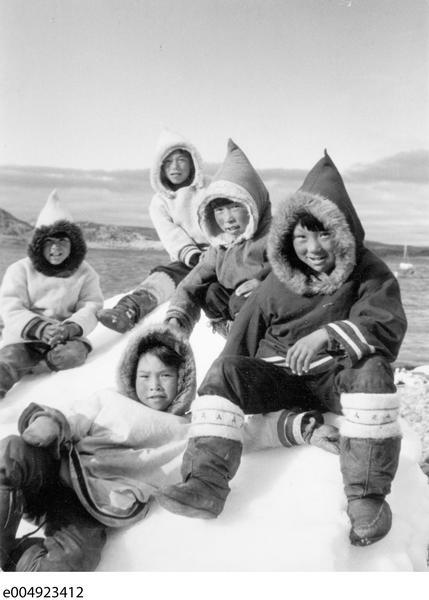Language, Names, and Individual Identity
How do our names shape our identities? Do they help answer the question, “Who am I?”—or, “Who are we as a group?” Often, names connect us to our family, to our language, and to our traditions. They contain very subtle references to a history, a tradition, or a place.
One example of the relationship between names, traditions, and identity is reflected in Inuit naming practices. For the Inuit, naming is an act that symbolizes continuity and a connection to family and tradition. Names are passed down through several generations to commemorate each person who has previously held that name. Based on the concept of sauniq, meaning “namesake” or “bone to bone,” this system is an important aspect of Inuit culture, reflecting the Inuit spiritual beliefs and emphasizing the interconnectedness among all life forms. Minnie Aodla Freeman shares her personal story of being named in her 1978 book Life Among the Quallunaat.
Before I was born, my mother had to decide who would be involved at my birth. . . . The first person who has to be there is a mid-wife, man or woman. In my case it was my grandmother. . . . Also present at my birth was the person I was named after, my other grandmother. This automatically meant that I would never call her ‘grandmother’ nor would she call me ‘grandchild’. Instead, we called each other sauniq, namesake, bone-to-bone relation . . . Our belief is that no one really dies until someone is named after the dead person. So, to leave the dead in peace and to prevent their spirits from being scattered all over the community, we give their names to the newborn. The minds of the people do not rest until the dead have been renamed. 1
Five Inuit children in Cape Dorset in the Northwest Territories, 1958. Within the Inuit culture, names are a powerful link to family and community.
- 1Minnie Aodla Freeman, Life Among the Quallunaat (Edmonton: Hurtig Publishers, 1978), 72, 50.

Connection Questions
- Based on the source, why might names be important to the Indigenous Canadians?
- In what ways do names in your community represent connections to family, tradition, or history?
- What is the relationship between your name and your identity? One way to explore that connection is by taking a few minutes to write about your name. What comes to mind?
- Indigenous people have often been encouraged or forced to change their names to sound more European. Frequently, this occurred in schools, where Indigenous students were given European names. Many Indigenous individuals now have European names, often alongside their Indigenous ones. While some are fine with their European names, others, often with great difficulty, seek to be renamed according to their tradition. Based on the excerpt above, what cultural and symbolic effects might that practice have had on Indigenous families and communities? Why might someone change her name and return to her culture’s naming practices?
How to Cite This Reading
Facing History & Ourselves, "Language, Names, and Individual Identity," last updated September 20, 2019.
















